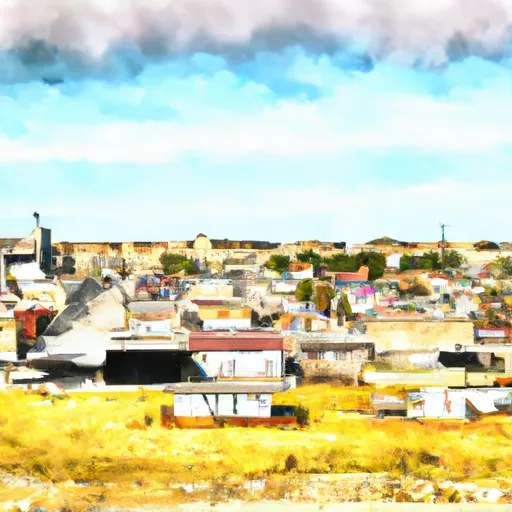-
 Snoflo Premium
Snoflo Premium
Get unlimited access to all our content
With no Ad interruptions! - Start Your Free Trial Login with existing account
Wheatland
Eden Index
Climate
8.0
•
Recreation
1.7
•
Community
•
Safeguard
3.8/10

Wheatland, Wyoming is a small town located in Platte County in the southeastern part of the state. The town experiences a semi-arid climate, characterized by hot summers and cold winters. Average summer temperatures range from the mid-80s to low 90s Fahrenheit, while winter temperatures can drop below freezing, with occasional snowfall.
Hydrologically, Wheatland is situated near the Laramie River and is surrounded by several reservoirs, including Glendo Reservoir and Guernsey Reservoir. These bodies of water provide opportunities for activities such as boating, fishing, and swimming. The North Platte River also runs through the area, offering additional recreational opportunities.
Outdoor enthusiasts can enjoy the vast natural beauty of the area, with opportunities for hiking, camping, and wildlife viewing in nearby destinations like Medicine Bow National Forest and Curt Gowdy State Park. The region is home to various species of wildlife, including elk, deer, and a variety of bird species, making it a popular spot for hunting and birdwatching.
In conclusion, Wheatland, Wyoming offers a semi-arid climate, access to various water bodies, and a range of outdoor recreational activities, making it an attractive destination for nature lovers and outdoor enthusiasts.
What is the Eden Index?
The Snoflo Eden Index serves as a comprehensive rating system for regions, evaluating their desirability through a holistic assessment of climate health, outdoor recreation opportunities, and natural disaster risk, acknowledging the profound impact of these factors on livability and well-being.
Climate Health Indicator (CHI): 8.0
Wheatland receives approximately
355mm of rain per year,
with humidity levels near 79%
and air temperatures averaging around
9°C.
Wheatland has a plant hardyness factor of
5, meaning
plants and agriculture in this region thrive during a short period during spring and early summer. Most
plants will die off during the colder winter months.
By considering the ideal temperature range, reliable water supplies, clean air, and stable seasonal rain or snowpacks, the Climate Health Indicator (CHI) underscores the significance of a healthy climate as the foundation for quality living.
A healthy climate is paramount for ensuring a high quality of life and livability in a region, fostering both physical well-being and environmental harmony. This can be characterized by ideal temperatures, reliable access to water supplies, clean air, and consistent seasonal rain or snowpacks.
Weather Forecast
Streamflow Conditions
North Platte
Area Rivers
North Platte
Snowpack Depths
North Platte
Reservoir Storage Capacity
North Platte
Groundwater Levels
Recreational Opportunity Index (ROI): 1.7
The Recreational Opportunity Index (ROI) recognizes the value of outdoor recreational options, such as parks, hiking trails, camping sites, and fishing spots, while acknowledging that climate plays a pivotal role in ensuring the comfort and consistency of these experiences.
Access to outdoor recreational opportunities, encompassing activities such as parks, hiking, camping, and fishing, is crucial for overall well-being, and the climate plays a pivotal role in enabling and enhancing these experiences, ensuring that individuals can engage in nature-based activities comfortably and consistently.
Camping Areas
| Campground | Campsites | Reservations | Toilets | Showers | Elevation |
|---|---|---|---|---|---|
| Lewis Park | 15 | 4,752 ft | |||
| Glendo State Park | 300 | 4,668 ft | |||
| Lost Springs City Park | None | 5,000 ft |
Nearby Ski Areas
Catastrophe Safeguard Index (CSI):
The Catastrophe Safeguard Index (CSI) recognizes that natural disaster risk, encompassing floods, fires, hurricanes, and tornadoes, can drastically affect safety and the overall appeal of an area.
The level of natural disaster risk in a region significantly affects safety and the overall livability, with climate change amplifying these risks by potentially increasing the frequency and intensity of events like floods, fires, hurricanes, and tornadoes, thereby posing substantial challenges to community resilience and well-being.
Community Resilience Indicator (CRI):
The Community Resilience Indicator (CRI) recognizes that education, healthcare, and socioeconomics are crucial to the well-being of a region. The CRI acknowledges the profound impact of these elements on residents' overall quality of life. By evaluating educational resources, healthcare accessibility, and economic inclusivity, the index captures the essential aspects that contribute to a thriving community, fostering resident satisfaction, equity, and social cohesion.

